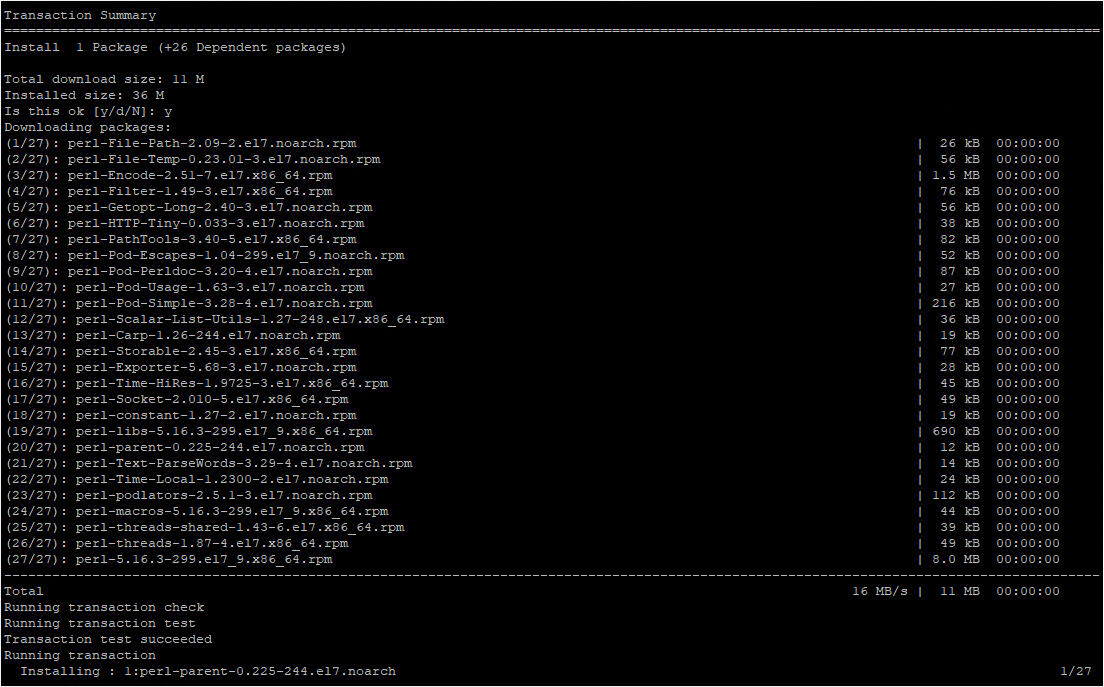In this post, we will guide you on how to install cPanel on a CentOS 7 VPS or a dedicated server. The guide was written by hosting experts and developers to get you started with the right details.
Key Takeaways
- You need to set up Perl first before installing cPanel.
- cPanel is not a free license, you have to pay depending on the number of accounts you have.
- cPanel can’t function on a dynamic IP address, it needs a new one.
How much do you know about the cPanel web hosting control panel? Here is more information about what it is and how it works. However, if you are knowledgeable on this, you can skip straight to the tutorial.
What is cPanel?
cPanel is one of the most popular web hosting control panels. It comes with a range of features such as a graphical user interface that allows multiple users to manage several servers. With the help of this interface, users can easily handle most tasks usually done on a website’s server including creating and managing emails, uploading files, managing databases and all web server tasks.
Why is cPanel Popular?
cPanel has become quite popular among users because of its simple user interface. New users can learn how to use it much faster; therefore, it’s now commonly used to launch websites. You can use it on your VPS or dedicated server even if you have zero experience in server management.
It also has a powerful control panel that makes it possible to manage all the hosting services in one place. Additionally, cPanel is customizable and automates the management of web hosting on a server.
What are the Features of cPanel?
Here are the key features when you install cPanel
- Intuitive and powerful GUI to control your server
- Supports operations such as backups, migrations and restorations in an easy manner.
- Email encryption
- SSH access
- Supports API authentication tokens
- Configuration of SSL/TLS for all client domains and server services
- Integrates with phpMyAdmin to manage MySQL databases
- Integration with WHMCS to automate billing management
- Offers AutoSSL supporting proxy subdomains.
How Much Does cPanel Cost?
cPanel isn’t a free application. You get a 15 day free trial period and then you have to pay. It requires a license fee which is $15.99 per month for a VPS server for one account. cPanel is licensed depending on the number of domains hosted on a server and the server type.
It also has other plans that you can pay for. For up to 5 accounts, you can pay for the Admin plan for $24.99 per month. The Pro option for up to 30 accounts is charged $35.99, while the Premier option that covers up to 100 accounts costs $53.99.
Why CentOS 7 VPS?
CentOS 7 is one of the most reliable and most compatible operating systems to install cPanel.
Requirements for Installing cPanel on a CentOS 7 VPS
- Static IP address. cPanel can’t function on a dynamic IP address, it requires a new one.
- A Cloud Server, VPS, or Dedicated Server that runs on CentOS 7.
- A valid cPanel license
- Root account to access the server
- A minimum of 1 GB RAM but you can go for 2 GB RAM which is highly recommended.
- A minimum of 20 GB Disk Space but it can go up to 40 GB.
How To Install cPanel on a CentOS 7 VPS or Dedicated Server
Before installing cPanel on your CentOS 7 server, you need to perform some pre-installation tasks.
cPanel Setup
Follow these steps to set up your web hosting panel.
1. Install Perl
cPanel uses Perl language. Run this command to make sure that Perl is installed on the server.
$ sudo yum install screen wget

2. Add Hostname
Once Perl is installed, you need to ensure that cPanel has Fully Qualified Domain Name (FQDN), commonly known as the hostname. This hostname is used to identify your server. You need to add a valid hostname. If you skip this step, you might encounter hostname issues that may prevent the cPanel installer from running.
If you get an error, you can resolve it if you have FQDN on your system. Run this command,
$ hostname vps.mydomain.com
You can replace the part vps.mydomain.com with your hostname. Make sure you own the domain.
Installing cPanel
Once you are done with the setup process, you can proceed to install cPanel. The installation process can take some time depending on your network speed and the resources you have for the service. A program known as “screen” is used during the installation process.
This program comes in handy if you have issues with your internet connection or want to pause the installation process.
To install screen, run this command,
$ sudo yum install screen wget
After installing “screen”, start a new session.
Next, run this command to start the cPanel installation process with the help of WHM.
$ wget -N http://httpupdate.cPabel.net/latest
Once you download the latest package from cPanel, start the script.
sh latest
Sometimes you may get an error message, “ERROR: NetworkManager installed by default and active. Must be disabled”
However, there’s a way to fix this error.
Once the error is fixed, you can launch the cPanel installation again. Be patient as it may take some time to complete.
Once the script has finished installing, you’ll have the right URL that you need to access.
Once the Installation process has finished, you can go ahead and login to your account by through the IP address is given below and type your username and password:
Now you’re done with the installation process. Go ahead and create the cPanel user and then login in at http://0.0.0.0/cpanel or http://mydomain.com/cpanel.
Here’s how to access the URL
Create the cPanel User
Previously, you didn’t need to do anything to activate the free 15 days license of cPanel. But now you need to login into your cPanel Store account. To access cPanel, you first need to agree to the terms and conditions. They have legal documents that cover key areas like,
- Privacy policy
- End user license agreement
- Technical support agreement
- cPanel/WHM pricing and term agreement
Once you read the terms and conditions agree to the policy.
Login to the cPanel store to activate your license.
cPanel will ask for your credentials i.e the email address and password.
If you already have login credentials, you can proceed. However, if you don’t have an account, you can create one.
cPanel will send you an email to create a password.
Follow the URL provided in the email to create a password.
You’ll need to verify your email address to activate the cPanel license.
You’ll then receive an account verification message and a verification code.
cPanel will also send another email to confirm the free trial.
Once you have the license, you can complete the details.
This completes the cPanel installation process.
Conclusion
cPanel allows you to manage several websites on a single server with ease. To complete the installation process, you’ll need a static IP address, VPS, or Dedicated Server that runs on CentOS 7, a minimum of 1 GB RAM and a minimum of 20 GB Disk Space. Once you install cPanel, and get the license, you can start using the web hosting panel
This tutorial should help you install cPanel on a VPS or dedicated server on a CentOS 7 server without any problems.
Next Steps: What Now?
Here are some practical steps you can take from this comprehensive guide on how to install cPanel on a CentOS 7 VPS or a dedicated server.
- You can install cPanel on the best dedicated server hosting providers.
- Secure VPS hosting from the top 10 VPS hosting providers.
- cPanel needs a static IP address because it can’t function on a dynamic IP address.
Further Reading
If you want to learn more about how to install and set up cPanel on a VPS and more about dedicated servers, here are some useful resources.
- https://safetyguardiens.com/hosting-guides/what-is-a-vps/
- https://safetyguardiens.com/blog/vps-vs-dedicated-server-head-to-head-comparison/
- https://safetyguardiens.com/hosting-guides/what-is-a-vps/
- https://safetyguardiens.com/cpanel-hosting/cpanel-pricing/
FAQs
- Is cPanel free?
cPanel has a free trial period. However, after that you have to pay for the license. They have four different pricing plans. - How long will it take for cPanel to install?
The time varies depending on your internet connection and resources on your server. It can take an hour or two on some servers and about 15 minutes on a dedicated server. - How do I change the hostname in CentOS?
In the WHM panel, you’ll see a section labeled “change hostname”. You can click on this to change the hostname.









